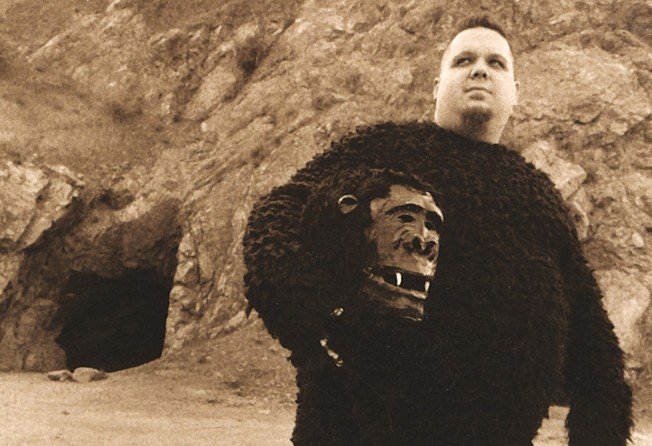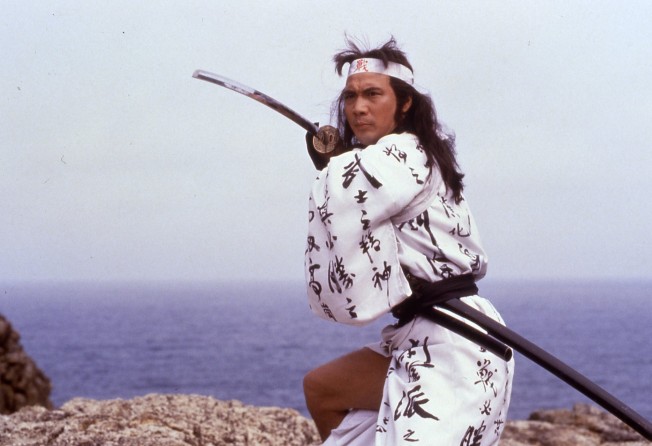Why the ninjas in kung fu films were almost always villains – think Shaw Brothers’ Five Elements Ninjas and Heroes of the East
- In Japan ninja films were social dramas, but Hong Kong filmmakers saw ninjas as ‘foreign devils’ and the perfect invaders for a hero to resist, an expert says
- That is so in Shaw Brothers’ Heroes of the East and Five Elements Ninjas, but in Japanese co-production Ninja in the Dragon’s Den the ninja character is noble

Japanese ninjas became a global cultural phenomenon in the 1980s, but they turn up relatively infrequently in Hong Kong martial arts films.
When they do appear in movies such as the Shaw Brothers classics Heroes of the East (directed by Lau Kar-leung) and Five Elements Ninjas (by Chang Cheh), they are portrayed as cheats who have no respect for honour and a penchant for using sneaky weapons like poison.
In reality, ninjas were spies trained in espionage, and they learned a number of stealth techniques. They carried tools, such as devices to break locks and rope ladders to climb into buildings, and knew how to hide underwater by means of breathing tubes, and disguise themselves in enemy territory.
The Post asked ninja expert Keith Rainville, owner of the Vintage Ninja website, about the fractious relationship between Japanese ninjas and Hong Kong’s kung fu fighters.
How do Hong Kong martial arts films differ from Japanese ninja films?
The biggest difference is that Japanese ninja films can rarely be defined as martial arts films. Although there is hand-to-hand combat and weaponry, the original ninja genre is based in drama.
Espionage and period warfare were a kind of window dressing for a metaphorical commentary on social class, the plight of exploited workers in post-war Japan, and the hopelessness of being stuck in a life you could not escape.
The younger generation became trapped in soulless office jobs for the first time in the 1960s, and they related to stories about highly skilled ninjas who were taken for granted and wanted to escape their lives as spies or assassins while dealing with enemies in their own clans and the samurai elite.
Also, in the era when the James Bond films exploded into popularity, Japan’s history of agents who used exotic bamboo versions of modern hi-tech spy gadgets proved irresistible on the screen.

These ninja techniques – which included using smoke to cover escapes, clever ways of infiltrating a castle, strange arsenals, and commando tactics – were way more important than the star’s ability to do precision martial arts forms.
Chivalry is a big part of wuxia films. Does that concept exist in ninja movies?
Chivalry goes hand in hand with a strong national pride, and an optimism that good can triumph over evil. Those notions were rarely displayed in the ninja genre. Tones of lament, fatalism, along with socialist themes and societal angst, were more common.
What do you think of the way that ninjas are portrayed in Hong Kong films like Heroes of the East?
Hong Kong cinema took one look at ninjas and instantly categorised them as villains. The distinctive ninja suit, and their signature weapons like shuriken (a star with projecting blades) and claws and smoke bombs, made them the perfect invaders for a kung fu hero to resist.
The fact that these “foreign devils” used “dirty weapons” and shadowy tactics made them dishonourable opponents for the swordsmen in the martial arts world. A major component of Heroes of the East is how the traditional Hong Kong hero’s love for his wife overcomes her venomous roots as a Japanese ninja.

Heroes of the East and Five Elements Ninjas are the two main Hong Kong ninja films, although ninjas do show up in films like The East is Red and Duel to the Death …
Duel to the Death is remarkable, it’s a combination of amazing ninja spectacle and outright silliness, and it contains some of the best ninja stuff ever to come out of Hong Kong.
But the Shaw Brothers studio was first to use ninjas, and Heroes of the East and Five Elements Ninjas strongly influenced the others – many people actually dismiss all the rest as imitations. Shaw themselves even recycled ninja costumes in films like Return of the Bastard Swordsman.

Were there also lower-budget Hong Kong ninja movies?
No one cranked out more ninja titles than Godfrey Ho Chi-keung and Joseph Lai Sa-lun, whose IFD label edited newly filmed scenes of stuntmen wearing cheap mail-order ninja suits into existing actions films from around Asia, and then gave them new titles. These films were retitled multiple times, so no one has a proper inventory of how many were released.
Taiwanese actor/director pairing Alexander Lo Rei and Robert Tai were also prolific.
Did Hong Kong filmmakers ever work with Japanese filmmakers on ninja films?
Arguably the best use of ninjas in Hong Kong films came from co-productions with Japanese talent. Ninja in the Dragon’s Den, made in 1982 just as the worldwide ninja craze was starting, is a rare example of the Japanese character being more than a one-dimensional villain.
Hiroyuki Sanada’s noble ninja not only becomes a good guy by the end, but a blood brother to Conan Lee, the hero and defender of the Chinese arts.
Ninjas were a big hit with audiences in the West in the 1980s, and have been assimilated into Western culture. Why’s that?
During the 1980s ninjas exploded from being exotic cultural oddities to household words almost overnight.
Everyone was looking for something new, and there was a fad for importing Japanese culture – Japanese design motifs and graphics were integrated into new fashions and record covers, for instance. Japanese ninjas had the novelty that viewers were looking for.
[Low budget studio] Cannon Films beat every major studio to the punch and released Enter the Ninja. It took little more than the opening credit sequence, which featured Sho Kosugi in black ninja gear showing various exotic weapons, to hook us all.
What ninja movies do you recommend to fans of Hong Kong martial arts films?
In terms of historical importance, Shinobi no Mono, the eight films the legendary Raizo Ichikawa made for Daiei Studios in the 1960s, are just amazing. They set off a major boom in ninja pop culture that lasted a decade in Japan. Any film from that era is just great – if it’s Japanese and made in the 1960s, you’re in for a treat.
In this regular feature series on the best of Hong Kong martial arts cinema, we examine the legacy of classic films, re-evaluate the careers of its greatest stars, and revisit some of the lesser-known aspects of the beloved genre. Read our comprehensive explainer here.
Want more articles like this? Follow SCMP Film on Facebook